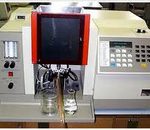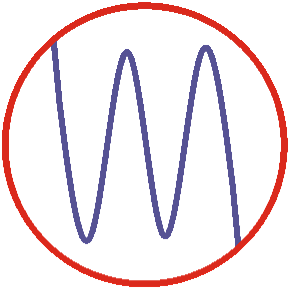
The lithium bromide solution powering your absorption chiller demands regular monitoring to maximize system lifespan and efficiency. When neglected, lithium bromide’s highly corrosive nature can accelerate component failure, spike maintenance costs, cause disruptive downtime, and shorten your chiller’s operational life. At Vamtec, our lithium bromide analysis delivers precise, actionable insights—pairing advanced lithium bromide testing with tailored chemical correction recommendations to safeguard your system.
By prioritising absorption chiller maintenance through our expert lithium bromide chiller service, you can prevent corrosion, optimize performance, and reduce long-term expenses. Trust Vamtec for chiller corrosion prevention and lithium bromide solution maintenance that keeps your absorption cooling system running at its best.
| ANALYTICAL TEST | SIGNIFICANCE |
| Specific Gravity/ % Lithium Bromide | Measures the strength of Lithium Bromide charge. Indicates the operational status of an absorption chiller. |
| Alkalinity/pH | Measures possible air leakage into the chiller. Affects metal corrosion. |
| Dissolved Copper | Measures tube corrosion. |
| Dissolved Iron/ Suspended Solids | Measures corrosion of steel interior. Gives an indication of a degree of internal fouling. |
| Lithium Molybdate | Measures Molybdate inhibitor strength. |
The specific gravity indicates the concentration of Lithium Bromide, determining whether it is sufficiently concentrated or too dilute to function effectively as an absorption medium.
The pH and alkalinity provide an indication of any air leakage into the chiller and offer insights into which metals are likely to be affected. For example, at low alkalinity and pH values, iron or steel components are susceptible to corrosion. Increasing the alkalinity protects these metals while potentially promoting corrosion of copper components, such as tubes.
The copper content and suspended solids indicate the extent of corrosive attack and how aggressively the Lithium Bromide solution is dissolving the machine’s components. They also show the degree of fouling inside the chiller, and whether the spray headers and heat exchangers are likely to be clogged with debris.
The inhibitor is added to the Lithium Bromide brine to protect various metallic surfaces and slow the rate of corrosion to acceptable levels. While corrosion can never be completely stopped, it can be minimized. This is the function of the inhibitor.
The alcohol test indicates the presence of Octyl Alcohol in the Lithium Bromide solution. Octyl Alcohol controls the tendency of Lithium Bromide to foam under vacuum.
Correction chemicals are small amounts of material required, based on chemical analysis, to adjust the Lithium Bromide solution back to its nominal specifications. Hydrobromic acid and Lithium Hydroxide Monohydrate adjust the solution’s alkalinity downward or upward, respectively. Lithium Molybdate directly adjusts the inhibitor strength.
Optimize Your Absorption Chiller with Expert Lithium Bromide Analysis
Lithium bromide analysis is the cornerstone of effective absorption chiller maintenance. At Vamtec, we specialise in lithium bromide testing to ensure your system runs efficiently, prevents costly downtime, and extends its operational life. But why is this process so critical, and how can it benefit your HVAC setup? Let’s dive into the details.
Why Lithium Bromide Analysis Matters
Absorption chillers rely on lithium bromide solutions as a key component in their cooling process. Over time, factors like contamination, corrosion, or improper chemical balance can degrade performance. Our lithium bromide chemical analysis identifies issues such as acidity levels, metal content, and inhibitor effectiveness. This proactive approach to chiller corrosion prevention stops small problems from becoming expensive repairs.
The Vamtec Difference in Lithium Bromide Chiller Service
Our expert team uses advanced techniques to deliver absorption chiller optimization. Whether it’s assessing the health of your lithium bromide solution or providing tailored recommendations, we ensure your system meets peak efficiency standards. From lithium bromide solution maintenance to full system diagnostics, Vamtec offers the best lithium bromide analysis services trusted by industry leaders.
How to Analyze Lithium Bromide in Chillers
Wondering what’s involved? The process starts with sampling your chiller’s lithium bromide solution. We test for key indicators like pH, alkalinity, and corrosion byproducts. Results guide precise adjustments—whether it’s adding inhibitors or flushing contaminants—ensuring your absorption cooling system care is top-notch. Regular analysis not only boosts performance but also aligns with sustainable HVAC practices.
Benefits of Routine Lithium Bromide Testing
- Enhanced Efficiency: Optimized solutions reduce energy waste.
- Corrosion Control: Protects internal components for long-term reliability.
- Cost Savings: Prevents unexpected breakdowns and extends chiller lifespan.
Ready to elevate your system? Contact Vamtec today for lithium bromide chiller service that delivers results. Let us help you maintain a healthier, more efficient absorption chiller with cutting-edge analysis.
